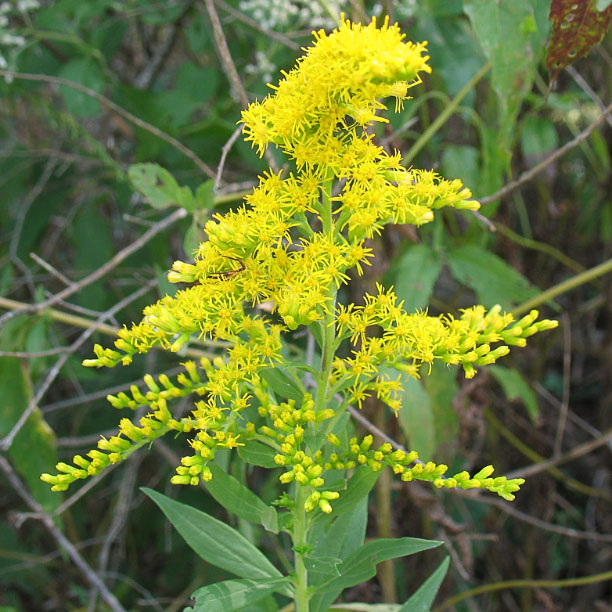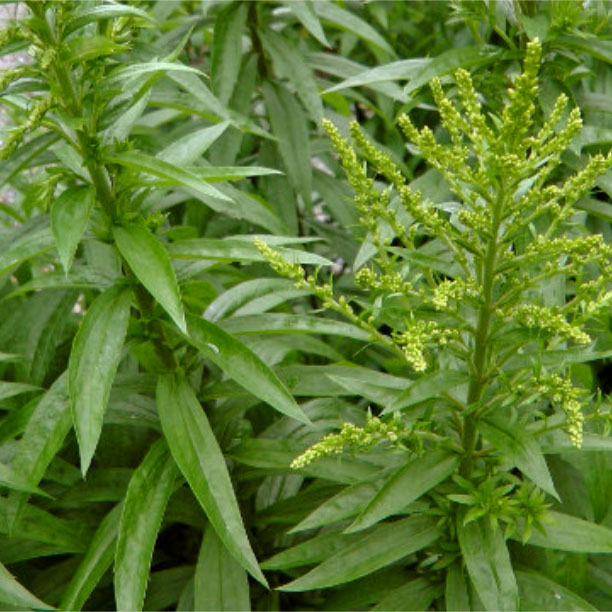Goldenrod
How To Identify
The stems grow quite tall ranging from 3 – 6 feet and have a slight fuzz to them. The leaves grow alternating up the stem and are lance shaped with fine teeth around the edges. The tops of the leaves are slightly darker than the underside and there are three prominent veins. Flowering from July through October, the flowers are bright yellow and grow on alternating stems with plumb-like clusters around the central stem. Smaller leaves can be found growing in between the flowering stems.


Benefits
Goldenrod is used to reduce pain and swelling (inflammation), as a diuretic to increase urine flow, and to stop muscle spasms. It is also used for gout, joint pain (rheumatism), arthritis, as well as eczema and other skin conditions, hay fever and asthma.
How To Find
Goldenrod likes open sunny areas and can often be found in fields along paths and roadsides. It loves fringe areas like where woodlands and gravely areas meet so you probably will not find it growing in the woods. It can be found in midspring but is easiest to find when in bloom from July through October.
Gathering
The stem and the flowers can both be used but we focus on the leaves to make our medicinal teas. To gather, cut the stem at the base and simply pinch and pull, from bottom to top, sliding your hand along the stem to strip the leaves off. Discard any leaves that look bad and keep the healthiest. The flowers can be collected as well if you want to add some color to your tea.
How To Use
Goldenrod leaves and flowers can be used fresh or dried to make either a tincture or a medicinal tea. Our preferred method is to dry the leaves for use with tea. This method is not only easier but also more palatable. To prepare a cup, steep about 2 Tbsp. of dried goldenrod leaves by pouring boiling water over them and allowing to infuse for 15 – 20 minutes, then strain and serve or simply stuff a tea ball and steep in your favorite cup or mug.
A tincture can be made by stuffing a jar (or other container) with fresh goldenrod leaves and flowers and then toping it off with vodka. Some people prefer to use a high proof brandy because they enjoy the flavor. Allow this to sit on a widow sill or another sunny spot for at least two weeks and then filter the liquid and discard the leaves. This liquid tincture can then be taken, 1/4–3/4 teaspoon (1–4 ml) three to four times per day.
Preservation
To preserve goldenrod leaves and flowers, place them into separate paper bags, or on a screen (window screen or similar) and allow them to dry in a dry dark place with good airflow. They can also be dehydrated using very low or no heat in a standard dehydrator or freeze dried. Oven drying isn’t recommended as the heat can damage the medicinal benefits. Another method of preserving is to make a tincture as described above. Because of the alcohol, tinctures can last on the shelf for years.